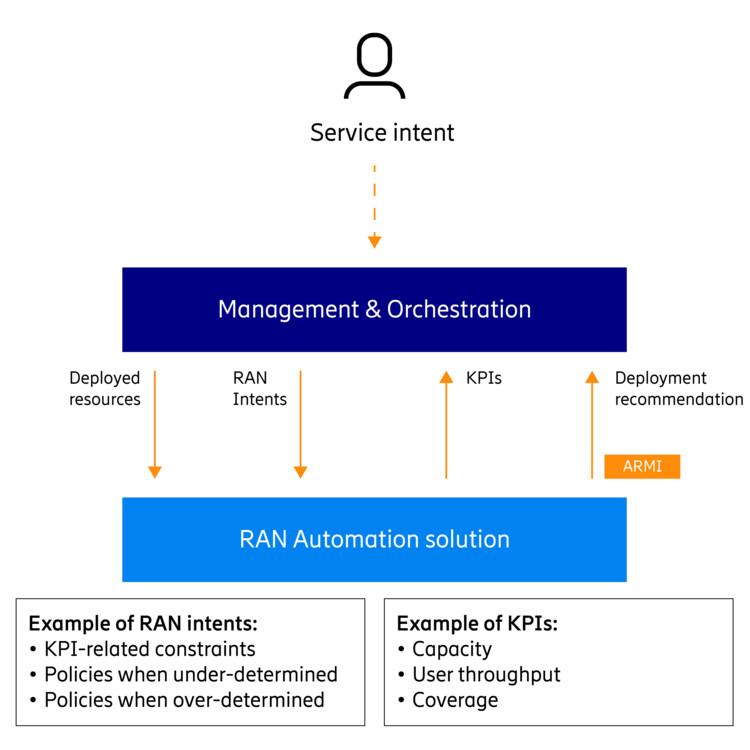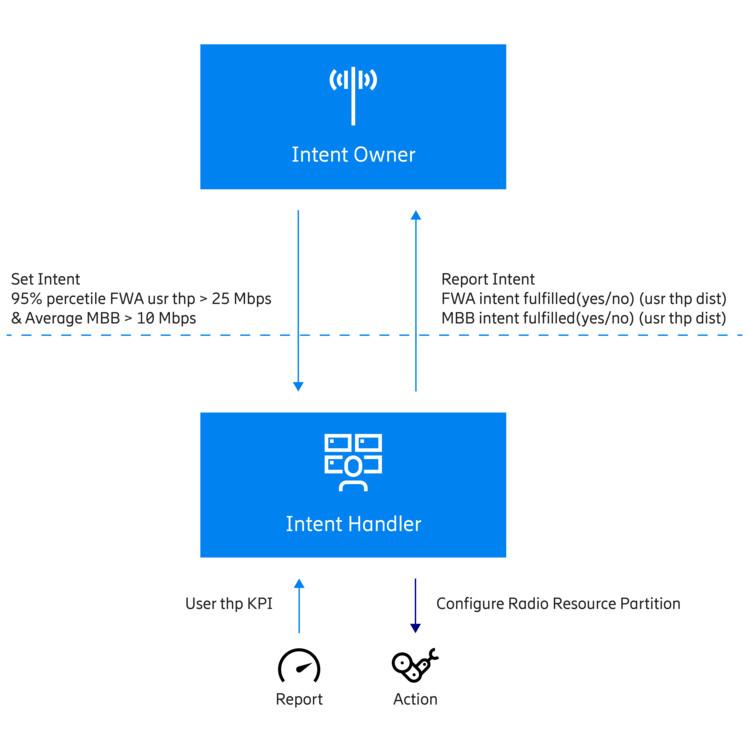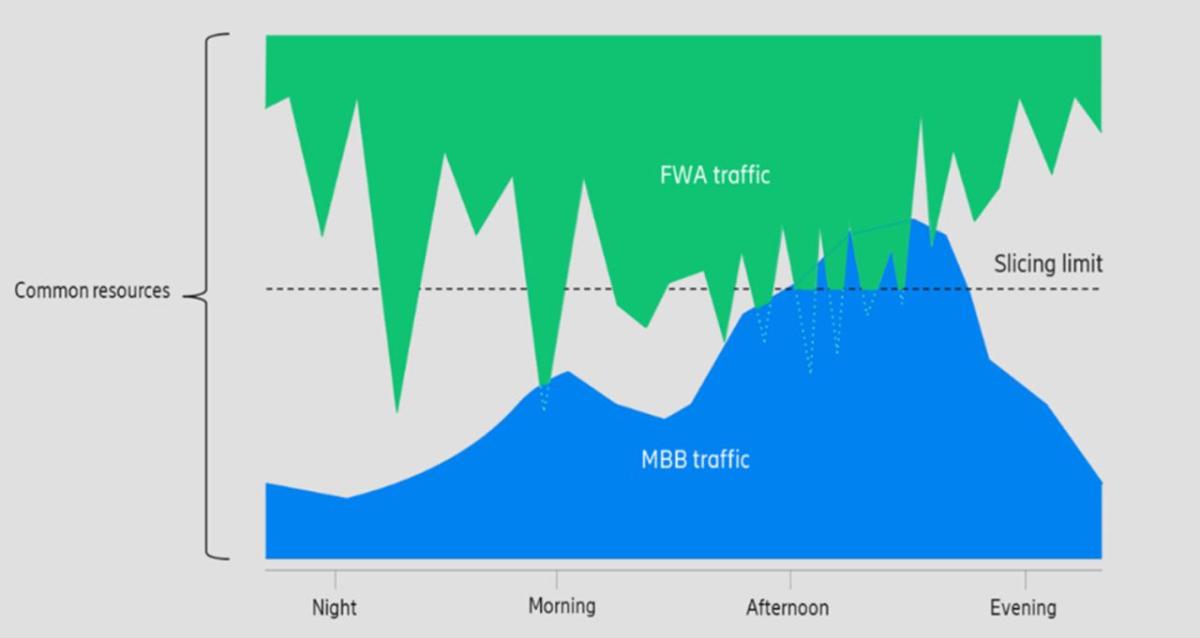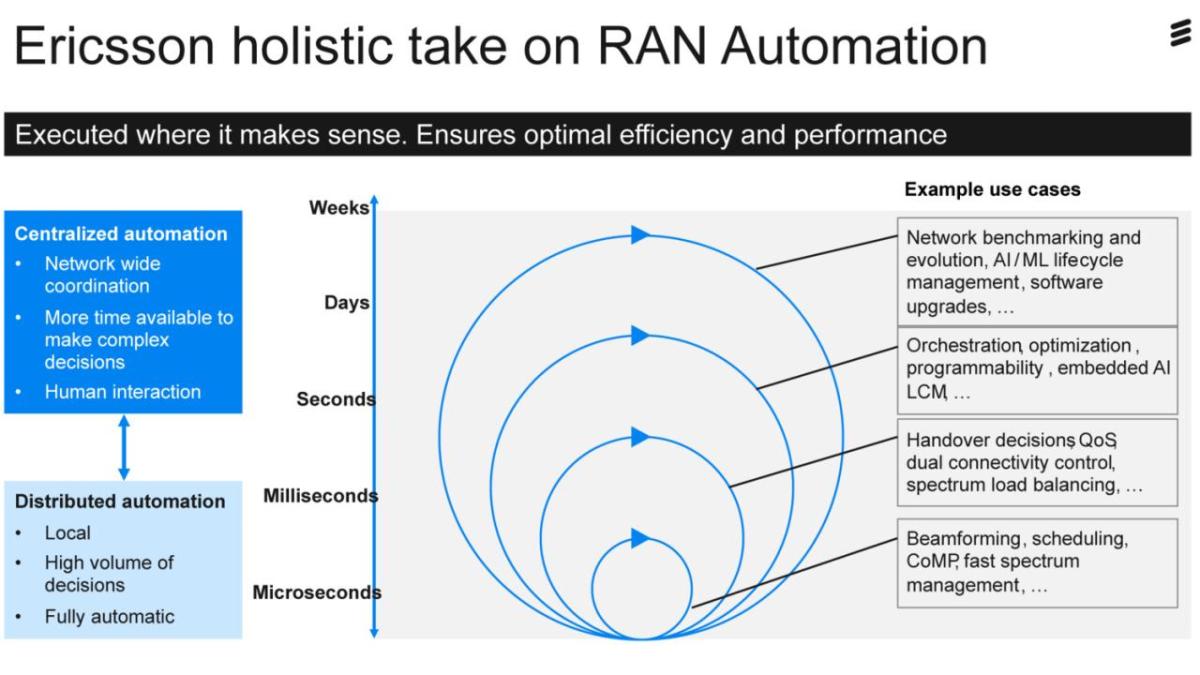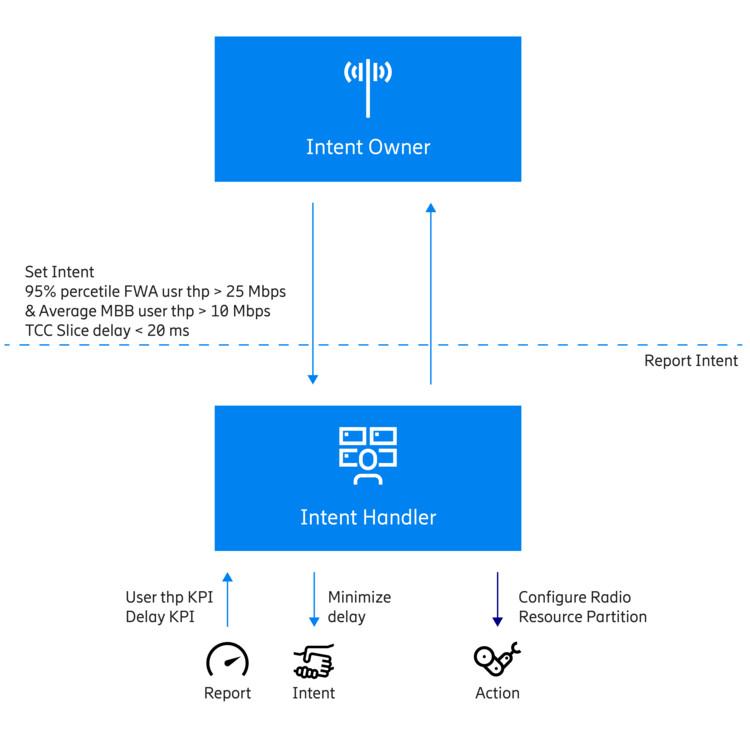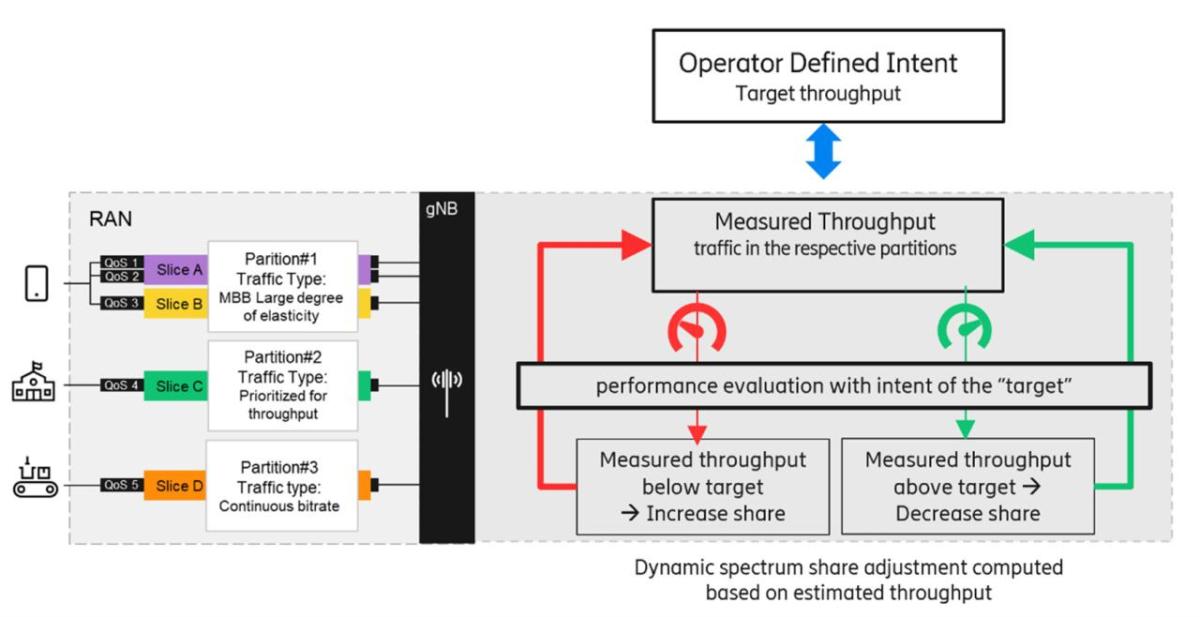How To Leverage Intent-Based Automation With AI/ML for 5G RAN
Originally published by Ericsson
Today’s CSP networks are mainly operated leveraging ‘golden parameters’ which are manually configured. In the dynamic environment of 5G, and soon 6G networks, this approach will be both inefficient and costly. Intent based automation, coupled with AI/ML, is a paradigm enabling the transformation of CSP networks into self-driving networks which deliver on business and sustainability targets.
Journey to the Zero-touch network
Automation of CSP networks could be compared to the automation of cars to self-driving cars. Currently there are several separate functions like adaptive cruise control, lane change assistance, self-parking that while automated, require manual initiation from the human driver. Over time, these functions will be interconnected and together with other new functions evolve to a single self-driving system. The self-driving system will allow a human passenger (note the change in role from ‘driver’) to request the car to drive to a destination and the initiation of the aforementioned functions together with acceleration, braking etc. will now be autonomously executed by the self-driving system. For example, a self-driving car takes the passenger’s intent ‘take me home’ and determines the best path while automatically handling complex tasks like changing lanes and avoiding obstacles. Similarly self-driving networks with intent-based automaton could take a CSP’s intent ‘maximize video streaming quality during peak hours’ and automatically adjust network parameters to satisfy that intent like prioritizing streaming video or dynamically allocating resources to ensure optimal performance, much like the self-driving car adjusted the route based on real-time traffic information. Networks with intent-based automation are precursors to the long term vison of a zero-touch network which is capable of configuring, healing, optimizing, and protecting itself, without active involvement of humans.
Why is it important to automate the Radio Access Networks?
The introduction of 5G has made the RAN more complex, with many aspects requiring tuning and coordination. Not only does NR significantly increase the number of band combinations that have to be managed; it also extends the capability of the network from supporting a single mobile broadband data service to supporting multiple data services (slices) with different characteristics. Fixed Wireless Access and time-critical communication are examples of services where slicing is applicable. Cloud-native RAN is expected to provide a high degree of agility and flexibility through instantiation and scaling of microservices. Manual intervention in the management process becomes impossible at this point. RAN automation is therefore essential to operate a network at this level of complexity. The objective of RAN automation is to boost RAN performance by replacing the manual work of developing, installing, deploying, managing, optimizing and retiring of RAN functions with automated processes. From a business perspective, automaton based on intents will enable CSPs to offer SLA-based services in a profitable way and thereby enables CSP better monetize their network.
Traditionally CSPs have had a set of key performance indicator (KPI) categories which including individual KPIs with each having target values. Examples of KPIs categories include accessibility, retainability, integrity, mobility, and availability. An example KPI for mobility would be for example handover success rate. CSPs’ operations teams would then have a set of network parameter configuration values also known as ‘golden parameters’ which would correspond to the ideal settings enabling the desired target value of a given KPI. The golden parameter will be manually configured, and this typically leads to sub-optimal network performance. Another dimension to the golden parameter issue is the complexity due to the dependency between parameters and KPIs – many parameters impact more than one KPI in a non-trivial way. For example, tuning a parameter to optimize one KPI may lead to worse performance relative another KPI in a non-obvious way.
In general, by addressing complexity, intent-based automation will enable the acceleration of business innovation and will enable CSPs to come out with new service offerings faster.
What are intents?
The TeleManagement Forum (TM Forum) defines intent as “the formal specification of all expectations including requirements, goals, and constraints given to a technical system.” RAN intents are based on overall CSP business intents and priorities with the specific purpose of guiding the RAN automation solution to optimize its behavior given a set of deployed resources (sites, sector carriers, transport capacity, software licenses and so on).
As the RAN intents guide the RAN automation solution, it is essential that RAN intents define the target values of KPIs that will impact end user experience like user throughput, delay, and coverage. The target values of KPIs should be considered as goals that the RAN automation solution should meet with available deployed resources. Each KPI target value must be defined in precise detail and based on quantities that the RAN automation solution can measure. In addition, due to the nature of the RAN, the target KPIs need to be expressed in statistical terms – that is, as a target of a certain percentile of users that best matches the desired consumer experience.
While the KPI target values are the required input, they are not sufficient as RAN intents. If the target KPIs are fulfilled by the system and there are still resources available, the system needs additional intents with information about what else it should optimize, such as peak throughput, capacity, or energy efficiency. If the system cannot fulfill the target KPIs, it needs a guideline detailing how to prioritize the available resources. Should some services or user groups be prioritized? Should cell edge users be disconnected or deprioritized? Furthermore, in this situation, the RAN automation solution should provide information to the operator about bottlenecks and the need for extra capacity in a given geographic area.
Intents exist in different parts of the system to guide the automatic operation and management of the whole network.
With intents as input, the RAN automation solution adjusts the resource usage and behavior of the RAN to meet the necessary goals. Figure 1 visualizes a CSP evolving from manual network operations to automated, intent-based service operations with the help of RAN automation.
Automation via intents
When automation functionality is added to a RAN solution in the correct way, the interface between the automated RAN solution and the CSP operations team is handled at a higher level of abstraction. This approach enables the CSP to define high-level RAN intents as input to the automated RAN solution rather than using detailed configuration parameters of the individual RAN functions. With this, intents can be seen as a pre-requisite of Zero-Touch Networks of the future. The Ericsson approach towards RAN automation includes an automated RAN management interface (ARMI), which conveys intents from end-to-end (E2E) management and orchestration to the RAN automation solution, as shown below.
Intents and AI/ML complement each other in an automation solution. On one side, AI/ML will replace/complement traditional algorithms to solve the complex task of optimizing towards intents. On the other side, intents themselves will enhance the use of AI/ML as they will provide can form the basis for goodness/reward functions used for training AI/ML models.
Optimizing towards different intents is a complex task for the functionality in the automation solution which will be very complex to solve with traditional algorithmic design, so AI/ML as a technology to develop the automation solution will be used to complement/replace the traditional algorithms.
Intent-based automation for FWA and MBB
With the introduction of FWA traffic into the network, it becomes important to manage the network so that both FWA and MBB services deliver the desired subscriber experience. Figure 3 shows how service intents can be expressed for FWA and eMBB users respectively. As an example, a user throughput of more than 25 Mbps for 90% of the FWA users and an average of more than 10 Mbps for the eMBB users is set as the target for the two services.
In the network, there are several mechanisms for assuring the performance of different slices. In the RAN, one such mechanism is Radio Resource Partitioning. Configuration of radio resource partitioning would benefit from an automated solution, where a closed loop could adapt the configuration for each cell over time (e.g., as FWA traffic increases by onboarding users). By having targets of 95% of FWA users having a user throughput above 25 Mbps and average MBB user having a user throughput above 10 Mbps, the automation function will be able to find a configuration that fulfills these intents in the best possible way. In situations of heavy congestion, it might be that the automation function cannot find a configuration for radio resource partitioning that fulfills all intents. In these situations, the automation function will use information given on the relative priorities between intents to fulfil intents in the most satisfactory way. The automation function will however signal this, so additional actions can be taken to avoid that the situation happens frequently in the future. Temporary faults and short-term network congestion could also be responsible for unfilled intents.
If the situation is persistent and is not caused by a fault, it might be that the network is not appropriately dimensioned for the traffic, and there are not sufficient resources available for the scheduler to fulfill the intents for both slices. If this is the case, different actions could be taken. One long-term action could be to upgrade the capacity so that there are enough resources available to fulfill the intents; otherwise, intents can be lowered in the specific area. This action requires detailed analysis to determine the best approach. A capacity upgrade requires a cost analysis, and relaxing intents requires an analysis of what this would mean to overall Customer Experience Management (CEM).
Intent based automation for time critical communication with AI/ML
Figure below illustrates how the task of efficiently operating a RAN to best utilize RAN resources can be divided into different control loops acting on different time scales and with different scopes. A successful RAN automation solution will utilize AI/ML technologies in all control loops to facilitate optimal autonomous functionality in different deployments and environments in an optimal way.
The two fastest control loops at the bottom of the figure are related to traditional RRM. Examples include scheduling and link adaptation in the fastest (layer 1 and 2) control loop and bearer management and handover in the second fastest (layer 3) control loop. These control loops are already autonomous with the decision-making based on internal states executed in time frames ranging from milliseconds to microseconds. The link adaptation problem, which entails the selection of the optimal modulation and coding scheme (MCS) depending on link’s interference, is implemented with AI/ML. The AI/ML model is then possible to augment to work towards different targets for example maximizing user throughput or minimizing delay for a specific user. Such a model would then be able to directly take intents as input to select the appropriate MCS for, e.g., MBB and TCC users, respectively. Figure 6 shows a new intent setting for delay target for TCC users. As with the intents for MBB and FWA, this TCC intent will serve as an overall target for the operations of the network as well as target for closed loop automation functionality.
Also, the AI/ML model responsible for MCS selection will directly contribute to the automated closed loop functionality, as it will be able to directly act on intents.
Intent based “Automated Radio Resource Partitioning”
Productification of Intent-Based Automation function in an important step as it needs to coexist in an efficient way with today’s Radio Access Network functions. Stepwise productification would pave the way to efficiently support upcoming 5G new use cases realization that several operators are planning to launch in the short term. The first step is to define functional requirements that will provide service differentiation with the help of Intent Based Automation within RAN which can be based on Slices or groups of users (e.g 5QI/S-NSSAI/ARP/PLMN/SPID).
Technically the steering mechanism of intent-based RAN automation would depend on achievable and measurable requirements that are based on realistic granularity, which can be throughput, latency, packet delay, etc. Once the service differentiation and measurable requirements are defined, that can be supported by the product in short term a robust “control loop” mechanism is required, and product decision needs to be taken for a suitable control loop realization?
The important decision in this regard would be to decide where in the node this intelligence block shall be based, or should it be outside the node? Another factor is to decide what the measurement procedure of the key indicator would look like for Throughput, Latency, Packet delay, etc.
Initial realistic step in short them would allow to dynamically manages the resource shares based on measured KPI for the traffic in the respective partitions. The spectrum resource shares used by Radio Resource Partition is dynamically adjusted to meet a throughput KPI for the traffic associated with the share. Radio Resource Partition adjusts the available resources on a millisecond basis according to the Ericsson current RAN slicing solution.
Key take aways
Ericsson is committed to delivering intent-based automation solutions to enable customers to address complexity and thereby reduce OPEX, providing a high level of experience to end subscribers. Intent based automation leveraging AI/ML will facilitate the delivery of time critical communications as well as MBB and FWA enabling CSPs to get a higher ROI on networks investments. Given the flexibility of intent-based automation in addition to improving network performance, we envision that this approach would accelerate business innovation and enable many new service offerings. Finally, intent-based automation will facilitate the evolution to Zero-touch networking.



